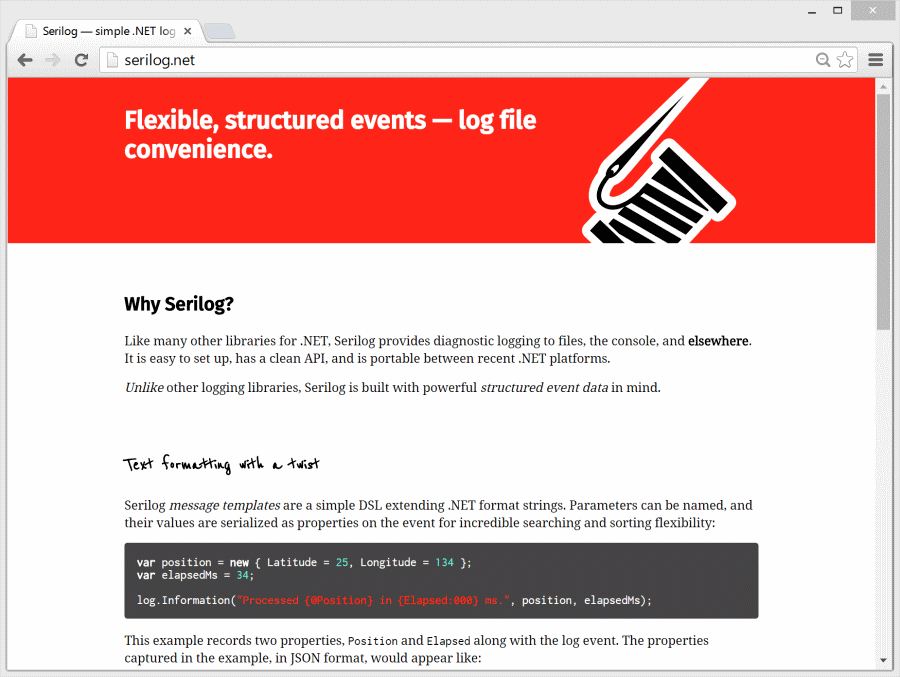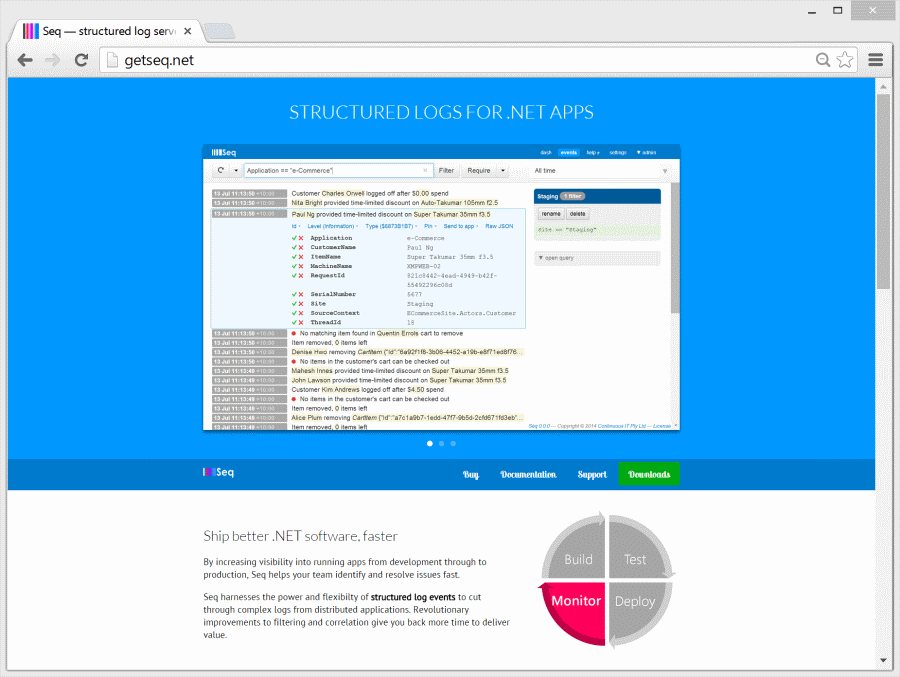Seq and Serilog around the web - August
Things have been quiet on my blog for the last few months, but certainly lively elsewhere around the web. I thought I’d post a few pointers to what’s new in the worlds of Seq and Serilog.
Hey– I’ve started cross-posting anything related to Seq on the Seq blog; this (nblumhardt.com) site will continue as my personal blog with a bit more varied material including most Seq content for now, so stay tuned in!
Modern Structured Logging with Serilog and Seq
If you or your company has a Pluralsight subscription, make sure you check out the great Modern Structured Logging with Serilog and Seq course written and presented by Jason Roberts.
The first two major sections of the course give a deep introduction to structured logging and Serilog, while the third section introduces Seq; the course is worth watching for either or both.
If you’re championing structured logging in your organisation, Jason’s course would make a great way to bring others up to speed.
Improve and Repeat
Johnny Graber’s Improve and Repeat blog is featuring Serilog in a series on modern structured logging. The first two instalments are up:
It’s shaping up to be another good resource for teams starting to introduce structured logging.
If your team still needs convincing that learning about Serilog is worth their time, Kristoffer Jansson’s Why You Should Try Out Serilog should help.
Event-processing angles
I thought it was cool to see this sample from the XSockets.NET team showing how to connect to a running (Serilog-enabled) application to collect logs.
Unlike other sinks we’ve seen to date, in this case the sink is a server, and clients connecting via XSockets request the level of log events they wish to be sent. It’s a really exciting angle that I think deserves serious exploration (think on-demand real-time diagnostics…)
Tangentially related (since we’re talking event processing here :)) Daniel Little posted a nice little primer on Debugging Rx with Seq, which is a pretty imaginative use for it.
Site redesigns!
Both Serilog and Seq themselves got new websites in the last couple of months.
Serilog is now an eye-catching red design:
I’m really happy with the way this one turned out - it’s nice and simple, and keeps all of the important info (how to use Serilog; where to find documentation and so-on) front-and-center.
Seq now has a new layout that makes it easier to organize content:
Currently the biggest improvement, other than the livelier design, is better access to older versions and release notes via the improved Downloads area. It’s also nice to have complete setup instructions back on the front page to show just how easy it is to get started.
What have I missed?
Let me know :)


